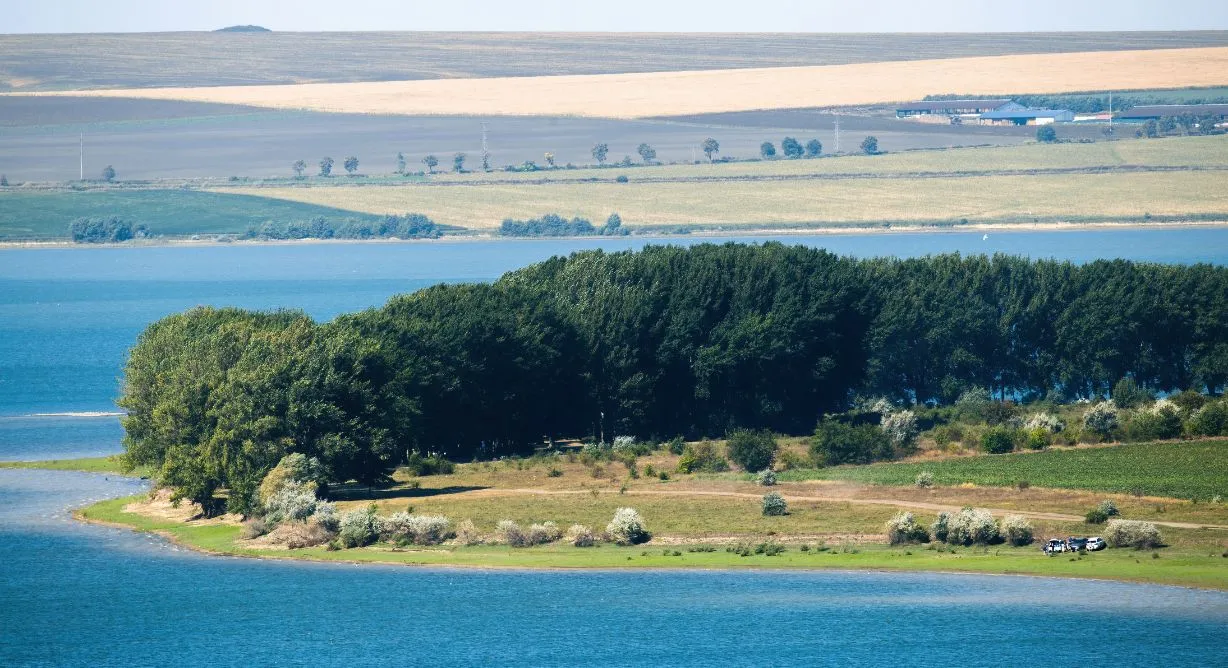When we talk about Lake Texoma, you might often see the name written with capital letters. But why does this matter? Is it just a grammatical detail, or is there a deeper reason behind the capitalization? Understanding the importance of properly capitalizing “Lake Texoma” goes beyond just rules of grammar. It involves recognizing the unique cultural, historical, geographical, and economic importance of this specific body of water, which straddles two states—Texas and Oklahoma. This article delves into why “Lake Texoma” should always be capitalized and how this simple choice carries significant meaning in various contexts.
The Role of Capitalization in Language
Capitalization plays a crucial role in the English language. It helps differentiate between a common noun and a proper noun, which refers to a specific person, place, or thing. When we refer to “Lake Texoma,” we are talking about a distinct body of water with its own identity, located at the border between Texas and Oklahoma. By capitalizing “Lake Texoma,” we give it the status of a proper noun, ensuring that we aren’t just talking about any lake, but a significant, unique, and nationally recognized landmark.
Without capitalization, we might risk confusing it with any generic lake. For instance, referring to “Lake Texoma” as simply “lake texoma” could imply that it’s just another unremarkable body of water. But in reality, it is anything but ordinary. By writing it with a capital “L” and “T,” we honor its uniqueness and importance. This rule of capitalization is vital for maintaining clarity in communication, especially when discussing such a noteworthy landmark.
Lake Texoma: A Geographical Marvel
Strategic Location and Significance
It is not only a breathtaking reservoir, but it also serves as an important geographical feature. The lake sits on the Red River, forming the border between Texas and Oklahoma. Specifically, it lies just five miles northwest of Denison, Texas, and about 15 miles southwest of Durant, Oklahoma. The lake’s geographical location is significant because it straddles two states—creating a unique blend of two cultures, histories, and political landscapes.
The sheer scale of Lake Texoma, along with its location, makes it a remarkable feature on the map. The fact that it lies across state lines emphasizes its regional importance. This dual-state positioning makes the capitalization of “Lake Texoma” even more critical, as it symbolizes cooperation, shared resources, and the blending of state identities. Whether you’re a Texan or an Oklahoman, the lake represents a vital water resource for both regions, and capitalizing its name underscores its cross-border significance.
Size and Magnitude: Why It Matters
The scale of it also makes it stand out among other lakes in the United States. When asked about the size of Lake Texoma, it’s important to note both its linear reach and its surface area. For example, the lake stretches over 65 river miles, providing ample space for boating, fishing, and other recreational activities. When visitors ask about Lake Texoma’s surface area, they are often surprised to learn that the lake covers a vast 139 square miles, or about 89,000 acres, at conservation pool levels.
These numbers highlight the sheer magnitude of Lake Texoma, making it a key geographical feature not only for the states of Texas and Oklahoma but also for the entire southwestern United States. By capitalizing the name, we reinforce the idea that this lake is a giant among bodies of water, deserving of respect and recognition. Its vastness and beauty make it a must-visit destination for tourists, and its size plays a critical role in its environmental and economic impact.
A Rich and Historic Legacy
The Birth of Lake Texoma: A Historic Project
Lake Texoma didn’t exist in its current form until the Denison Dam was completed in January 1944. The construction of this dam was part of a larger flood-control initiative during the New Deal era. Construction of the dam began in 1939, and by 1942, steel was being rolled for the project. The turbines of the dam became operational in September 1949, marking the transformation of a region that had long struggled with flood management.
The historical significance of Lake Texoma goes far beyond its construction. The dam itself has been an engineering marvel, and its creation was a turning point for the region. For instance, POWs were involved in clearing timber for the spillway during World War II under the Geneva Convention rules, adding a historical layer to the project. This unique aspect of the lake’s history underscores why it is not only important to capitalize the name but to also recognize the tremendous efforts that went into its development. The creation of Lake Texoma is a story of resilience, collaboration, and innovation that has shaped the region for decades.
Lake Texoma and Extreme Weather Events
Throughout its history, Lake Texoma has been a witness to extreme weather events, particularly floods. The spillway at Denison Dam plays a vital role in managing high water levels, especially during times of heavy rainfall. For example, in May 2025, the lake reached flood stage, and the Denison Dam released over 43,000 cubic feet per second (cfs) of water. This event drew hundreds of spectators, underscoring the dramatic power of the lake and the spillway during times of crisis.
These extreme flood events highlight the importance of Lake Texoma, not just as a recreational destination, but as a vital component in the region’s flood control system. Recognizing the lake’s role in managing these events makes it clear that capitalization is important. When people refer to the “Lake Texoma Spillway” or the “Lake Texoma Dam release,” they’re not just talking about water flows—they are talking about a dynamic force that has protected the surrounding communities for generations.
Economic Impact and Tourism Value
Lake Texoma as a Tourist Destination
In addition to its geographical and historical importance, Lake Texoma is also a key driver of tourism. Every year, thousands of visitors flock to the lake to take advantage of its recreational opportunities, including boating, fishing, and camping. With the lake being only about 79 miles from Dallas, it’s an ideal destination for North Texans looking for a weekend getaway. The abundance of marinas, state parks, and scenic areas makes it a top choice for both seasoned anglers and families looking for a peaceful retreat.
Tourism boards and local businesses rely on the recognition of Lake Texoma to draw visitors. Whether it’s anglers seeking the best fishing spots or nature lovers wanting to explore the stunning shorelines, Lake Texoma’s reputation as a recreational paradise is well established. By capitalizing “Lake Texoma,” we help ensure that it remains a prominent part of regional tourism efforts, attracting millions of visitors each year. The name itself evokes an image of adventure, relaxation, and natural beauty, encouraging people from all over the country to visit.
Real Estate and Economic Growth Around Lake Texoma
Beyond tourism, Lake Texoma also plays a significant role in the local economy through real estate. With its stunning views and abundant natural beauty, properties around the lake have become highly desirable for buyers. From luxury waterfront homes to affordable lakefront cottages, the area around Lake Texoma is thriving with real estate development. Ads for properties often include maps showing the proximity of these homes to the lake, which helps buyers visualize the lifestyle that comes with living near such a landmark.
In addition to residential real estate, the lake’s economic impact extends to businesses and industries surrounding it. The water district shared by Texas and Oklahoma helps manage resources efficiently, and the border adjustment policy of 2024 further unified both states in their approach to water management. These economic collaborations underscore why capitalizing “Lake Texoma” is essential. It’s more than just a body of water—it’s a focal point for regional development, creating jobs and boosting the local economy.
Environmental and Ecological Importance
Preserving Lake Texoma’s Natural Beauty
Lake Texoma is not just an economic engine; it also serves as an ecological sanctuary. The lake is home to a wide variety of fish species, including striped bass, largemouth bass, and blue catfish. The surrounding wetlands and wildlife refuges, such as the Hagerman and Tishomingo Wildlife Refuges, provide crucial habitats for migratory waterfowl and other wildlife species. These natural ecosystems play a vital role in maintaining biodiversity and promoting environmental sustainability.
The importance of Lake Texoma in environmental conservation makes it clear that the lake deserves to be capitalized in all forms of communication. By acknowledging the lake’s ecological value, we also recognize the efforts of conservationists who work tirelessly to protect these habitats. The capitalized name draws attention to the lake’s status as a critical environmental resource, helping to raise awareness about the need for continued preservation efforts.
Climate Change and Flood Management
With climate change leading to more extreme weather patterns, the role of Lake Texoma in flood mitigation is becoming increasingly important. Hydrologists and engineers are continuously refining flood management techniques to handle more frequent and severe flood events. The Denison Dam’s spillway is an essential component in this effort, as it regulates water flow to prevent downstream flooding. As climate models predict an increase in flash-flood events by 2035, the lake’s role in managing these events will only grow more critical.
Capitalizing “Lake Texoma” emphasizes the need for ongoing attention to these issues. As climate change reshapes our environment, the lake’s role in maintaining regional flood control and water supply will remain crucial. Recognizing the lake in this context makes it clear that it is a valuable and irreplaceable resource.
SEO and Digital Visibility
Capitalization and SEO Benefits
In today’s digital world, capitalization plays a significant role in improving search engine optimization (SEO). Google and other search engines rely on accurate use of capitalization to properly index and rank content. When people search for terms like “Lake Texoma map” or “Lake Texoma spillway,” using the correct capitalization ensures that search engines can properly identify and return the most relevant information. By capitalizing “Lake Texoma,” we help boost its visibility in search results, making it easier for people to find accurate and trustworthy content.
The use of capitalization is especially important for websites, blogs, and tourism-related content that focus on Lake Texoma. Whether it’s a blog about fishing spots or a travel guide to the area, consistently capitalizing “Lake Texoma” ensures that these pages rank higher in search engine results, increasing their visibility and relevance. For anyone promoting or discussing the lake online, capitalizing the name is an essential step toward improving their SEO strategy.
Conclusion
Lake Texoma is much more than just a body of water. It is a historically significant, geographically unique, economically important, and ecologically vital landmark that spans two states. Capitalizing the name “Lake Texoma” is not merely a grammatical choice; it is a way to show respect for the lake’s rich history, its importance to the local economy, and its role in regional environmental management.
Whether you’re discussing the lake’s recreational offerings, its ecological value, or its impact on local communities, capitalizing “Lake Texoma” helps maintain its identity and prominence. By following this simple rule of grammar, we ensure that Lake Texoma continues to receive the recognition it deserves as a unique and essential part of the Texas-Oklahoma border. So, the next time you mention Lake Texoma, remember to capitalize it—not just as a matter of grammar, but as a way to honor everything this remarkable body of water represents.

